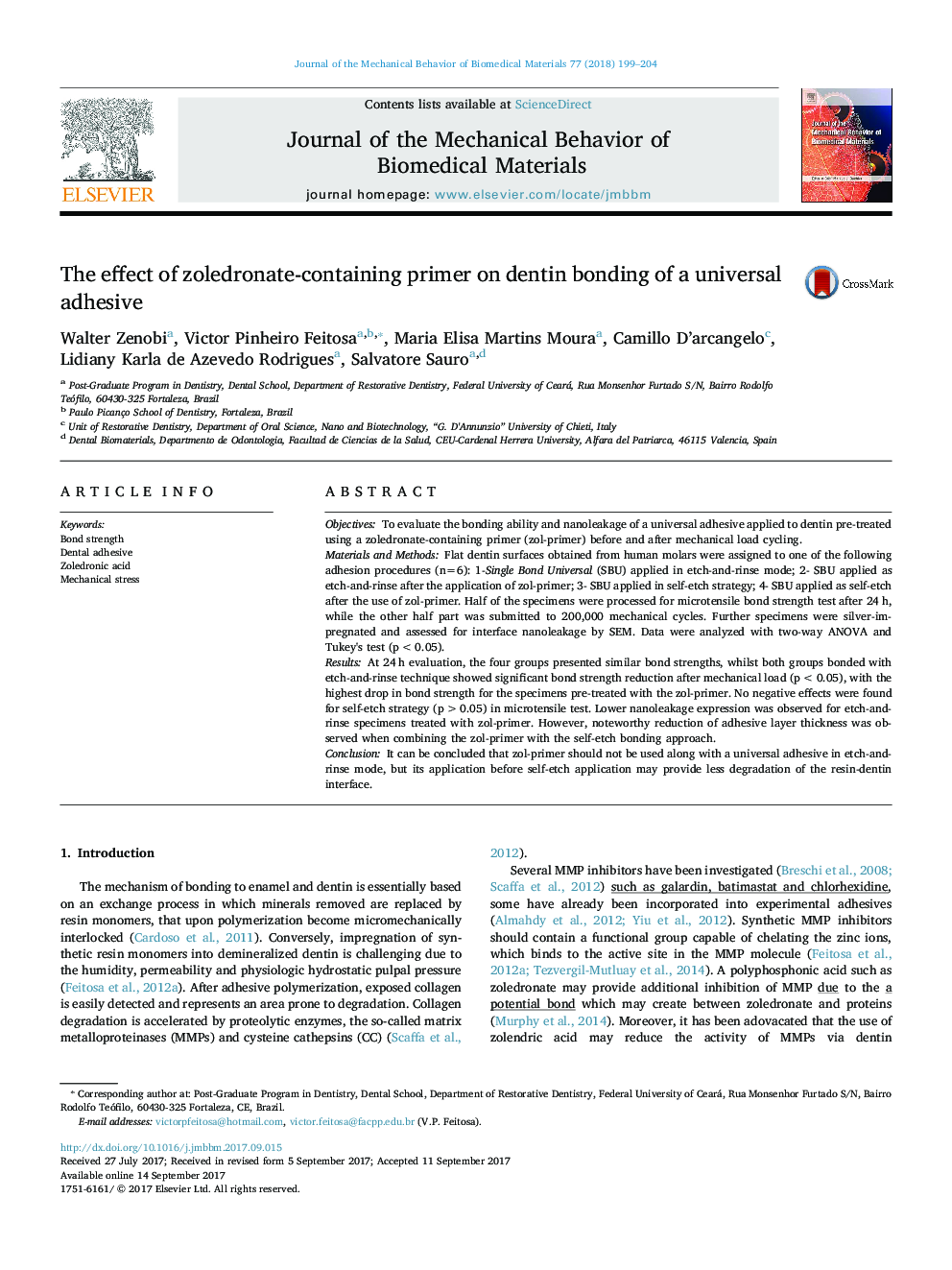| Article ID | Journal | Published Year | Pages | File Type |
|---|---|---|---|---|
| 5020356 | Journal of the Mechanical Behavior of Biomedical Materials | 2018 | 6 Pages |
ObjectivesTo evaluate the bonding ability and nanoleakage of a universal adhesive applied to dentin pre-treated using a zoledronate-containing primer (zol-primer) before and after mechanical load cycling.Materials and MethodsFlat dentin surfaces obtained from human molars were assigned to one of the following adhesion procedures (n=6): 1-Single Bond Universal (SBU) applied in etch-and-rinse mode; 2- SBU applied as etch-and-rinse after the application of zol-primer; 3- SBU applied in self-etch strategy; 4- SBU applied as self-etch after the use of zol-primer. Half of the specimens were processed for microtensile bond strength test after 24Â h, while the other half part was submitted to 200,000 mechanical cycles. Further specimens were silver-impregnated and assessed for interface nanoleakage by SEM. Data were analyzed with two-way ANOVA and Tukey's test (p<0.05).ResultsAt 24Â h evaluation, the four groups presented similar bond strengths, whilst both groups bonded with etch-and-rinse technique showed significant bond strength reduction after mechanical load (p<0.05), with the highest drop in bond strength for the specimens pre-treated with the zol-primer. No negative effects were found for self-etch strategy (p>0.05) in microtensile test. Lower nanoleakage expression was observed for etch-and-rinse specimens treated with zol-primer. However, noteworthy reduction of adhesive layer thickness was observed when combining the zol-primer with the self-etch bonding approach.ConclusionIt can be concluded that zol-primer should not be used along with a universal adhesive in etch-and-rinse mode, but its application before self-etch application may provide less degradation of the resin-dentin interface.
